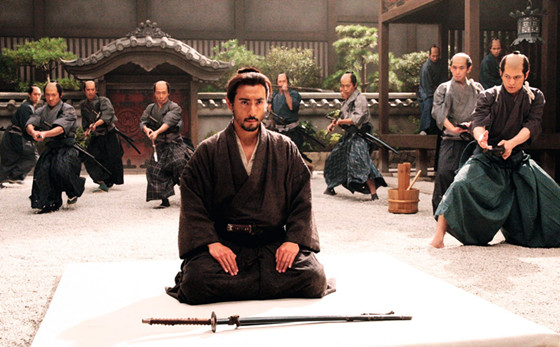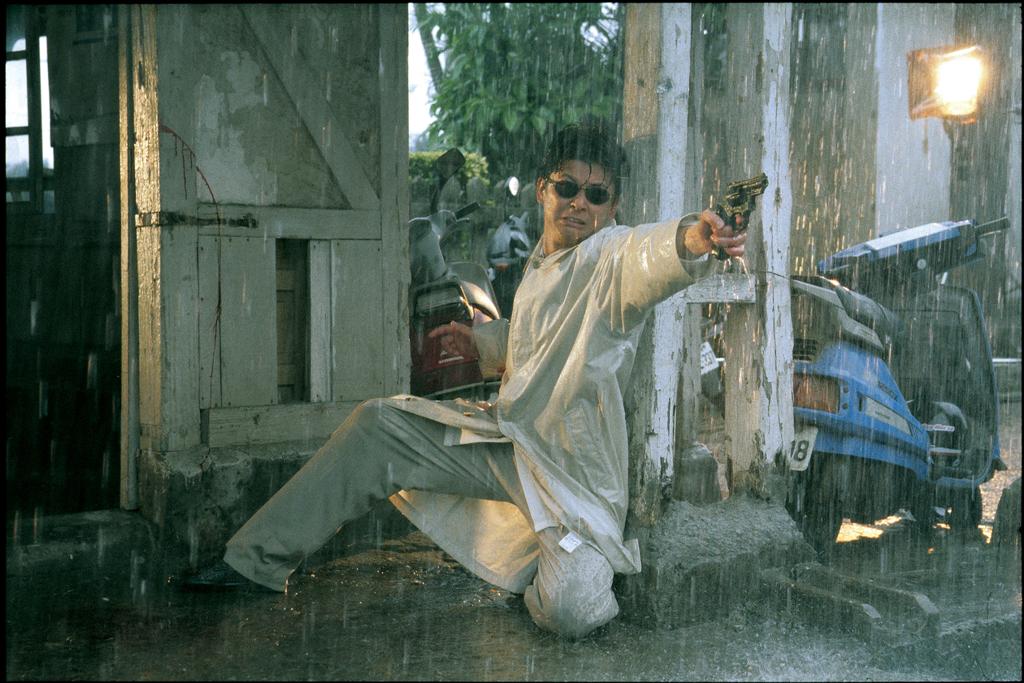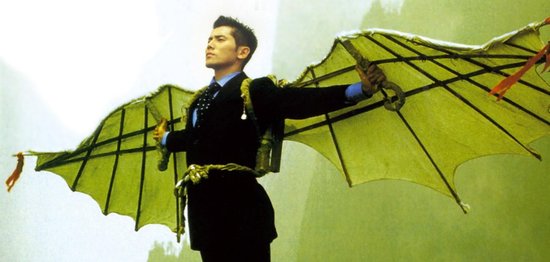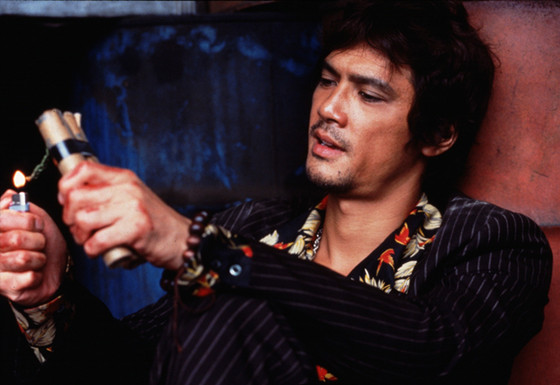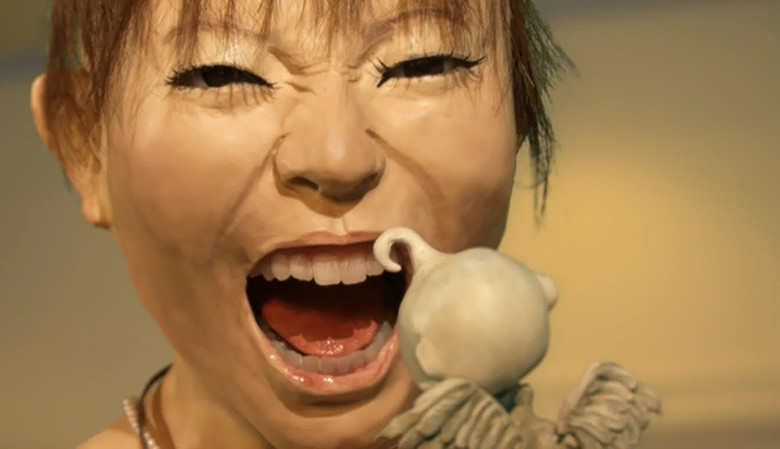Let’s start this list with a disclaimer. The term “essential” in the title of this article applies only to those who are into Takashi Miike’s films and know what they might be in for. For all those who aren’t familiar with the works of the extremely prolific Japanese director yet, it will be very touch-and-go as plenty of his work is best described as varying from “extreme” to “bizarre” and certainly not to everyone’s taste.
That being said, the man is not only very prolific (IMDB lists 93 director’s credits for him so far) but also very versatile and there are plenty of works in his filmography, which cannot be described by the aforementioned adjectives and can appeal to a far larger audience. Hell, the man has even directed movies for kids and for every sick and twisted title he has made, there seems to be another movie to counterbalance it.
Miike’s roots lie in Japan’s V-Cinema (a term used to describe direct-to-video productions) where he started his career in the early nineties. Japanese V-Cinema basically distinguishes itself from regular film productions in two ways: there’s less money and less restrictions. This probably explains Miike’s distinguishing features as a director. First of all there’s his proficiency as the man has managed to sometimes direct as many as seven films in one year.
V-Cinema productions are churned out quickly as there are little funds available and Miike has seemingly never slowed down, even when he quit making direct-to-video titles. Secondly, it explains the often extreme or plain insane subject matter of many of his movies, as he could more or less do whatever he felt like in V-Cinema since controversy sells and there were little restrictions in regards to censorship. And lastly it might also explains why Miike has worked in so many genres as he started out as a director for hire, who would take whatever type of project he was offered.
That being said, there’s no doubt that Miike’s greatest defining feature and the one he has gained worldwide notoriety for is his gift for “extreme” cinema and this list will certainly have its fair share of those films but not be limited to them. And it’s no coincidence that Miike had a cameo appearance in Eli Roth’s Hostel as one of the people leaving the building where the rich get to torture people whilst stating: “Be careful, you could spend all your money in there”. A fitting tribute to a director who has come up with some of the most twisted films to come out of Japan. And that says a lot.
I decided to stick to a top ten but if you’re interested in seeing more of Miike’s work, Dead or Alive 2: The Birds, Zebraman, Deadly Outlaw Rekka, Gozu, Sukiyaki Western Django (featuring a cameo by Quentin Tarantino) and his segment in Three…Extremes also should be sought out.
10. Hara-Kiri: Death of a Samurai (2011)
The first entry on this list is a fairly recent film by Miike and in fact not very representative of the calibre of film that the director is known for. In fact, it’s a remake of a true masterpiece of Japanese cinema, 1962’s Harakiri by Masaki Kobayashi. The reason it is on this list though is that against all odds Miike actually made a great (albeit an arguably unnecessary) remake despite the fact that this film is very far removed from anything he had done before and a tough gig to pull off, considering the reputation of the original film. Don’t get me wrong: if you haven’t seen Kobayashi’s Harakiri, there is no way you should see Miike’s version instead but since we’re compiling his best works here, there is simply no way this film could go left unmentioned.
The story deals with Hanshiro (Ebizo Ichikawa), a samurai without a master, who arrives at warlord Kageyu’s mansion with the request to have use of his courtyard to commit ritual suicide. It’s a time of great change in Japanese society and many samurai have found themselves without work and purpose. Committing suicide is considered the honourable thing to do under these dire circumstances. But often it is just a bluff and a cry for sympathy, as many samurai are given alms by the wealthy people whose courtyards they request to perform their ritual seppuku in and then simply go on their way.
And as Kageyu thinks Hanshiro might be trying to do just that, he tells him the story of a young samurai who recently was forced to go through with the suicide using a blunt bamboo blade in Kageyu’s courtyard. What he doesn’t realise is that Hanshiro is well aware of this fact and that his motive for coming to Kageyu’s mansion is not monetary at all.
Seemingly pulling off the impossible, Miike displays nothing but restraint in his remake of Hara-Kiri and proves once and for all that there might be a lot more to the director than most would have ever suspected. Beautifully shot and featuring rich performances from the entire cast, Hara-Kiri: Death of a Samurai is a deeply meditative and humanistic film, two adjectives which are not commonly associated with Miike’s works. Simply put, it’s a great film and it comes recommended to all lovers of Japanese cinema, even fans of Kobayashi’s original. And that is the greatest compliment one could give Miike and his film.
9. Rainy Dog (1997)
Rainy Dog is the middle segment of Miike’s so-called Black Triad Trilogy, preceded by Shinjuku Triad Society and followed by Ley Lines. All three movies obviously deal with triads and the Japanese yakuza but its a thematic trilogy only and the films are complete individual entities so there is absolutely no need to see the other ones in order to be able to enjoy Rainy Dog. It’s arguably Miike’s first more accomplished work, greatly improving on the first segment in the trilogy and in fact on all films he did before 1997.
The film follows a hitman called Yuuji (Shô Aikawa, a Miike regular) who has been fired from his yakuza syndicate in Japan and has been left stranded in Taipei. To keep afloat he starts doing one-off jobs for a local gangster but he finds his life further complicated when an ex-lover suddenly shows up with what turns out to be his mute son.
The woman departs and leaves the boy behind and Yuuji keeps going about his business, taking the boy along to his hits and visits to the whorehouse where he starts a relationship with prostitute Lili. But when Yuuji kills the brother of a powerful yakuza and takes off with a suitcase full of money he finds on the scene, the trio all become targets as a bounty is offered for Yuuji and there isn’t anyone in town they can trust.
A dark brooding film filled with melancholy and set in seedy and seemingly always raining Taipei, Rainy Dog is again not the typical film many people might expect from Miike. Slow, deliberate and even strangely moving, the film is in no way the over-the-top craziness that the director is usually associated with. Many of the Miike’s recurring themes are to be found here and whilst it is a quiet and toned down affair, this is still one hell of a bleak affair which almost seems like it would be more at home in the Korean New Wave instead. Not as explicit as many of the director’s more infamous works, Rainy Dog still packs a punch, albeit in a far more grimey and depressing manner.
8. The Bird People of China (1998)
Another early work by Miike which clearly indicated that the he was taking major leaps forward as a filmmaker and that it would be hard to restrict his reputation to that of being a one-note controversial director. Not only is this film one of the director’s most lyrical works, it also distinguishes itself by its original setting, especially as Japanese films set in China are not all that common.
The film tells the story of Japanese businessman Wada, who is sent to the Yunnan province in China to assess an untapped vein of high-quality jade. Accompanying him is Ujiie, a member of the yakuza, who needs to ensure that his triad gets their share, and a guide by the name of Shun, who needs to escort them through the remote and unknown landscape. But when Sun hits his head and loses his memory, the men find themselves lost in the middle of nowhere, far from civilisation.
They then stumble upon an ancient village where the locals believe that men once could fly and a woman in the village is in fact still trying to teach the villagers to do so by strapping them into bamboo and paper made wings. This magical village has a profound impact on the city slickers and they start to free themselves from their modern trappings and dream of a new kind of life.
Using the stunning landscapes of China’s Yunnan province and a meditative, humanistic and even magical tone, The Bird People of China was Miike’s greatest critical success at the time and it was also clearly seen as departure from his previous work, which would often deal with urban crime and violence instead. The film marked the beginning of a golden age for Miike in which he would become one of Japan’s major contemporary directors and clearly indicated that the man was far from a one-trick pony. If you like your films beautiful, filled with magical realism and introspective, this is the Miike film for you.
7. Agitator (2001)
Arguably Miike’s best serious yakuza film, the easiest way to quickly describe this one is as a Takashi Miike version of a Takeshi Kitano gangster film, especially his recent Outrage titles, which this movie pre-dates by nearly a decade. 2001 was possibly Miike’s most impressive year to date. Not only did he manage to direct seven films that year, four of them made it on to this list as being absolute highlights of his career. Simply put, Takashi Miike was on fire in 2001 and Agitator was the most grounded and stylish feature of the otherwise wildly bizarre movies he would churn out that year.
The murder of a young yakuza member sparks an all-out war between two rival Tokyo crime families. During this time Kaito, a leader in the vast Tenseikai syndicate, tries to consolidate his position of power by bringing two smaller families, the Shiranes and Yokomizus, under his control. He does so by sending an assassin to take out the leader of the Yokomizu family but fails to foresee that one of the young gangleaders in the family, Higuchi, will never bow down to him and that the young yakuza and his allies might in fact have far more honour and loyality than he at first had imagined.
A two and half hour epic dealing with the convoluted intricacies of Japanese yakuza families and their internal politics, Agitator has the occasional outburst of extreme violence but mainly plays it straight and examines its themes of honour, loyality, treachery and revenge with thoughtfulness instead. A complex storyline with many players and varied levels of deceit and treachery, Agitator ranks amongst the best yakuza films out there and deserves as much recognition as some of the lauded works by fellow Japanese director Takeshi Kitano. A must-see for all fans of gangster films.
6. The Happiness of the Katakuris (2001)
Finally…a movie that truly does justice to Miike’s reputation as a director of the truly bizarre and one of the three films he made in 2001 that really showcase why the man has become somewhat synonymous with outrageous films. The Happiness of the Katakuris is in fact a remake (although the term “re-imaging” would be far more accurate) of the Korean film The Quiet Family but whereas that film was pretty much a straight-up black comedy, Miike’s version is truly all over the place.
Possibly the most insane entry on this list and even Miike’s entire career, The Happiness of the Katakuris is a truly surreal piece of work which features black humour, musical and dance sequences, claymation, a sing-along karaoke scene, dream sequences and a few zombies for good measure.
The Katakuris are a family of failures, who have moved to the country and purchased an old mountain inn next to a garbage near Mount Fuji with the patriarch’s redundancy pay-out. But to no fault of their own, every guest that stays with them winds up dead and fearing that their reputation will be tarnished and no one will come to the inn, they decide to cover every fatality up by burying the corpses in the back yard.
Unfortunately this just causes the bodies to turn into zombies. And as if that wasn’t trouble enough, there’s a murderer about, the daughter’s ex-lover con-man boyfriend turns up unannounced whilst the daughter also falls in love with a U.S. Naval officer called Richard Sagawa, who despite looking very Japanese claims to be the nephew of Queen Elizabeth II. Oh…and then there is the active volcano of course…
If you hadn’t gathered it from the plot synopsis above, The Happiness of the Katakuris is a one of a kind and extremely silly movie. It’s probably safe to say you have never seen anything like this and more than likely you never will again. Although it certainly qualifies as bizarre and does have its share of grotesque and gross moments, the film is a very light-hearted affair and does not compare to some of the more twisted and violent works of Miike, which we will get to shortly. Nonetheless, we are firmly in cult-territory here and this is basically where we’ll remain from here on in.
